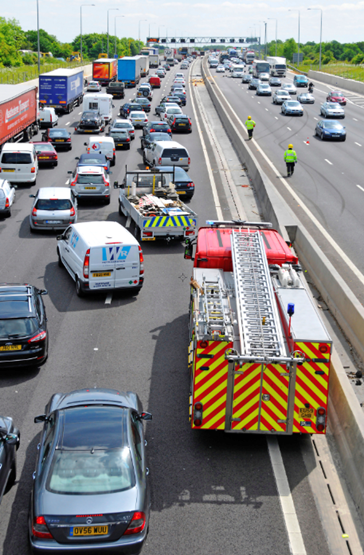 Read the peer reviews on this feature
Read the peer reviews on this feature
Five! Pick any day - the day I sat down to write this, or the day you read it. Five is the number of people who left home in the morning and did not return. They died in road accidents.
It is, of course, an average figure, but it is still a sobering one. The number of people killed on our roads in 2015 was 1,732… 54 of them children. Often we never even know their names. They slip through the cracks of our lives, their deaths perhaps not even reported in the local press. Yet their loss ripples outwards - an empty desk at school or work, or a loved one gone.
To be crude but frank, the loss is also financial. From the accident scene and the resulting congestion, to the work of the emergency services and hospital doctors, and finally the investigation and possible prosecution. The Department for Transport estimates the value to the UK economy of preventing these deaths is more than £16 billion every year. Each is thought to cost £1.8m. And beyond the death toll, official statistics suggest 22,000 people were seriously injured in 2015, and 162,000 were slightly injured. Both of those latter categories are of course somewhat subjective though. Lives are changed forever in accidents, long after doctors and the physical healing process have done their work.
By contrast, in the 2015-16 period no one died as a result of a train accident - for the ninth consecutive year. The number of fatal accidents involving the rail workforce also declined to zero, for the first time since records began at the turn of the century, although for the sake of balance there were still a handful of passenger fatalities (mostly at the platform edge - but not related to boarding or alighting), three pedestrians killed at level crossings, and almost 300 suicides or suspected suicides.
To be very clear, this is not some deeply inappropriate point-scoring exercise. A rail safety record which is globally admired is only earned and sustained by hard work and by lesson learning.
For example, towards the end of 2016, the deaths of seven passengers on the Croydon Tram network was a shocking reminder that good records can be undone in a moment. It was significant enough in the national psyche that the names and photographs of the victims shared the front pages of national newspapers with the election of an American President.
Yet in the past few years, the steady decrease in road fatalities has slowed. Between 2005 and 2010 the number practically halved. Now, the DfT acknowledges in statistical terms it has remained unchanged since 2011. The lack of outcry from society might imply we have accepted the risks of personal motoring. Yet the devastation to lives and the financial cost continues.
Professor Richard Allsop is an Emeritus Professor of Transport Studies at University College London. He has worked on aspects of transport policy research since the 1960s.
“The roads have never been a free-for-all,” he says. “When motor vehicles first arrived, if you wanted to drive a car you had to have a man walking in front of you with a red flag. There have always been elements of regulation, which have progressively become more complex over the years.
“As motorisation increased in the post-war period, the number of deaths on the road went up until 1966, when it reached effectively 8,000 people. The introduction of the breathalyser in 1967 had a marked effect. By the early 1970s the number of deaths per year was on a downward trend. It is now around 1,800 a year, and that is in the context of traffic having multiplied five times since 1967.”
Allsop describes himself as a constructive critic of Vision Zero, a global campaign to eliminate all road injuries. It began in 1997 in Sweden, and has been taken up by some British cities and towns. “People make mistakes,” says the Vision Zero website. “Vision Zero supporters say policies must aim to protect them from fatal errors on roads.”
“Some people believe in total elimination in death and injury,” continues the professor. “As a scientist I know, we don’t know how to achieve that. My suspicion is it won’t be achievable. The concept has done tremendous good, and I’m sure it has accelerated the rate of reduction of deaths on the road, but I don’t buy it.
“I don’t find it credible, with any kind of automation or any kind of improvement in behaviour - when you have 65 million people and 40 million motor vehicles circulating in a reasonably free society in a country where the amount of space available is what we have - that you can eliminate accidental death from the road system. But with determination we should be able to reduce it by a factor of (say) something like four from where we are now.”
Allsop argues a case for reintroduction of national targets motivating effort at local authority levels. “Until May 2010 we had a positive allocation of money and positive requirements on local authorities to have a plan in place for their next steps in reducing death and serious injuries on the road. All of that was dismantled in the summer of 2010. The Coalition Government was confident the numbers would keep coming down, but in fact the decrease ceased and the number of deaths has levelled off - there are some local authorities where there are no specialist staff and no budget for explicit road safety work.”
The Government now frames its policy on road safety through the previously mentioned British Road Safety Statement. It has set priorities for tougher enforcement against drivers who speed, drink drive, take drugs or use their phones behind the wheel. There is also still an aim to protect vulnerable road users (cyclists and pedestrians) through infrastructure and vehicle improvements.
The Parliamentary Advisory Council for Transport Safety (PACTS) is a registered charity which aims to inform MPs and Lords on air, rail and road safety issues. It set up an independent Transport Safety Commission which, in March 2015, published a report into the various legal framework and institutional responsibilities in the UK for transport safety across roads, railways and aviation. The executive summary is stark.
“There needs to be a long, hard look at our present arrangements for roads to take advantage of learning from the experience in the rail and aviation sectors and in the road safety management practices of other leading countries,” it says.
“The complex structure of responsibility for safety in the case of roads is far from transparent to the public and professionals alike. It is hardly surprising that accountability and leadership in road risk management can become diffuse. Currently there are no national casualty reduction targets for local roads in England. The balance of opinion we received was strongly that national targets are helpful and necessary.”
PACTS Executive Director David Davies says: “We’re connected to Parliament, and our focus is working with and advising MPs and the House of Lords to keep safety - mostly road safety - on their agenda. We’re not trying to speak to the public.
“Our overriding priority is to reinforce the message that road safety is not fixed or solved - it is still the biggest risk most of us face in our daily lives. It’s the biggest killer for young people aged 15 to 25. Although the UK has a good record, we absolutely need to do a lot more.”
In mid-March this year, PACTS was due to host a conference to discuss current collision investigation practice. The Chief Inspector of the Rail Accident Investigation Branch was one of the speakers. The agenda seems set to promote the notion of a more coordinated approach to investigation of serious road accidents and possibly a road accident investigation branch, to parallel those for rail, air and maritime.
Says Davies: “It’s on the cards. There is now a sort of regulator for the trunk road network. The Office of Rail Regulation is now the Office of Rail and Road. It encompasses a safety brief for trunk roads. Although the Department for Transport doesn’t have a UK-wide or even England-wide road safety casualty reduction target, it has set targets for Highways England in relation to the trunk road network. It’s quite a demanding target.”
In the British Road Safety Statement, the DfT outlines a number of activities to “help Highways England to move towards its target of reducing the number of people killed or seriously injured on the strategic road network by 40% by the end of 2020, and its aim of bringing that figure as close as possible to zero by 2040”.
“They probably aren’t going to meet that,” says Davies. “I’ve heard senior police collision investigators say: ‘What we do is essentially with a view to prosecution - has someone been speeding or drink driving? What we are not doing is gathering information across the piece. We’re not gathering these investigations together and saying ‘look, if only this vehicle was designed differently, or this road was designed differently, or information had got across to drivers, then we could prevent casualties’.
“We feel there needs to be a more systematic rigorous learning process, at least from the fatal accidents. We’re not suggesting every bump and shunt should be investigated - a bit like air and rail, in that they don’t investigate every accident. They look at what happened and ask if there is something special about it, some learning we can get out of it.
“We are now getting to the numbers where that is feasible. 1,700 deaths on the road each year, which is around 1,600 fatal accidents - it is not impossible to investigate all of those. Indeed, the police do, so if we could have some kind of process of transferring the information from the police to a learning centre...”
The DfT already runs a scheme called Road Accident in-Depth Studies (RAIDS). Phase 1 began in 2012, during which more than 1,000 collisions were investigated. A second phase is now under way which will run until 2019. Investigators attend accident scenes while the emergency services are still present, with the aim of using the data gathered to inform effective policy-making.
“RAIDS is good and all about learning, but we’d like to see that bigger and more systematic,” continues Davies. “I think we should be getting down to 1,000 , certainly by 2025.
“Driver behaviour is difficult to influence. Exhorting people to be more careful doesn’t work unless it is backed up by enforcement. It is therefore about safer vehicles, safer road designs, segregated cycle routes, safer junctions. The new mantra is safe system - the thinking behind that is: it is really difficult to kill yourself even if you make a mistake. You accept people will make mistakes, and you design around the frailties of the human body.
“We do see really good practice in the railway industry. We are trying to spread some of the rail safety mentality and standards to road. In rail it is not acceptable to think ‘a whole bunch of people will die this year’, and live with that. The assumption is you will try and prevent them all. In road there is still an assumption that ‘1,700 might all die next year and we hope it will come down a bit’.”
Why?
“Most drivers on the roads are individuals who are not under the control of an employer or anybody. If you have a licence, you can drive. Even for those driving for work, health and safety standards are much less rigorously applied. On the railways someone is accountable - there is a human psychology that comes into it. Our attitudes to risk are not necessarily consistent. People are prepared to tolerate risk when they think they are in control. If they are in a train or a plane and someone else is in charge, they expect absolute safety.”
Investigations are, of course, only part of the story. Once the data has been gathered, and the causes and consequences identified, the lessons then have to be acted upon.
Over their history the railways have become used to this process. Improvements to braking, signalling, the installation of the Advanced Warning System, and many other developments in technology have emerged in the aftermath of major accidents.
For example, the horrific and all-too-recent accident at Ladbroke Grove in 1999, which cost 31 lives and injured a further 520 people, prompted another major change. The Rail Safety and Standards Board was established in April 2003, following the recommendations of Lord Cullen in the Public Inquiry into the accident. The RSSB is a not for profit company owned by key stakeholders in the industry themselves. Len Porter was its Chief Executive until 2014.
“Most of my life was spent in the oil and gas sector. Most industry sectors managed their safety based on compliance with standards. You set standards, you comply with them diligently, and it was considered you were safe.
“In truth the best way to manage safety is to identify hazards, quantify the risk associated with them and their precursors, and then reduce the risk to as low as practicable. Only one of the ways of managing that risk down is compliance with standards.”
Again it took an accident to drive change. In 1988 the North Sea oil platform Piper Alpha was destroyed by an explosion and the fire that followed.
“The report into that completely changed the industry - from one which managed safety based on compliance with standards, to one that did so based on understanding of risk,” recalls Porter.
Was it a large job to bring that thinking to the railways?
“When I joined the rail sector, it was an industry that was broad but old, and still managed safety in compliance with standards. It was a huge job. Fortunately, it started to happen quickly and we had willing participants in Network Rail and the train operators. They sat on the board of RSSB and allowed us to move them towards a risk-based approach.
“It is a matter of defining the data, spending the money on the systems, getting them much better than before, populating the risk models. Anybody working on the railway was called to supply the data to RSSB, and they did.” The data was fed into SMIS (Safety Management Information System). SMIS in turn was used to populate the SRM (Safety Risk Model) and the PIM (Precursor Indicator risk Model). The PIM in particular allowed the industry in Porter’s words, “to get underneath” accidents and examine what the precursors to them were.
“The biggest one was, of course, SPADS (Signals Passed at Danger), but also for example infrastructure failures. The industry managed that risk, very hard, down - and it tumbled quite considerably. It was about identifying incidents that could have led to accidents. Like looking after the pennies, and the pounds - in this case the big accident problems - looking after themselves.
“I think it is more difficult for roads. Railways are much more rigidly controlled, but there are still things you can do to quantify the primary risks. To be fair I think they are moving in the right direction, but it is still controlled by Government. It is very large and it is slow.”
Backing up the industries’ own proactive approach to safety is of course the statutory regulator. The Office of Rail Regulation was established in 2006. In late 2015 it picked up a brief to monitor and hold Highways England to account, in the process transforming into the Office of Rail and Road.
Ian Prosser, the Chief Inspector of Railways and Director of Railway Safety, is another ‘transferee’ - he came to the railways after decades in the chemical, pharmaceutical and automotive industries. He describes ORR as a “medium touch regulator”, where inspectors in the field still work closely alongside the industry, but are fewer in number than a decade ago. They do however spend more time on proactive inspections resulting in a more efficient operation.
“The whole issue of culture and management maturity is something we have been pushing,” he says. “It’s what we have to build on to get to the next level. Increasing management maturity so there is less intervention from the regulator and fewer and fewer enforcement notices and prosecutions, so that slowly but surely - well they won’t put us out of business, but we’ll be doing less reactive inspections, in particular.”
ORR’s brief between rail and road is subtly different. It monitors Highways England (so therefore has no say in the trunk roads of the devolved nations), rather than enforces safety policy.
Given the combining of steel and tarmac into one office, does Prosser envisage a progression towards a situation one day where he has an equivalent… a chief inspector of roads?
“We are trying to help our colleagues in highways monitor where we can,” he continues. “Where we can we share some good practice - we do that already to give our expertise in terms of health and safety in general. It is important we are not complacent. If there are things we can learn from the highways sector, we will try and do that as well. Co-operation works both ways - that’s very important.”
Prosser acknowledges that the job is also far from done for the railways, with the next decade bringing fresh challenges to be met in four key areas.
“One is managing growth as it continues. That will become more difficult with constrained infrastructure - managing people through stations and platforms, for example.
“The second one is maintaining and renewing a safe, sustainable and reliable infrastructure. We have HS2 coming. That’s very important to create capacity, but we still have our main line railway, which is still in the main built on Victorian infrastructure. Going forward, we have to think about extremes of weather that can have an impact on earthworks and structures.
“The third one is around the culture, and I include in that a big push further on health management. That will help improve the culture - if people think you care for them they will start to engage more effectively. That’s both physical and mental health. It is important what the industry is doing on suicide prevention, but we also need to do more about the mental health care of our own staff. There are over 200,000 people working in this sector... they are in some stressful situations, in some cases on the front line, especially as growth has improved. That has had a knock-on effect of more congestion and sometimes more difficult passengers to deal with.
“The fourth one is something we have pushed a lot… safety by design. We’re building more than we have been used to in the past. Thinking about the risks you have to manage beforehand is an important area.”
The Strategic Road Network witnesses 85 billion miles of journeys a year, according to Highways England’s own strategic plan. It carries a third of all traffic and two-thirds of all freight.
Freight on Rail - a partnership between the rail trade unions, the rail freight industry and Campaign for Better Transport - works to promote the economic, social and environmental benefits of rail freight, both nationally and locally. However, according to CBT’s Freight on Rail Manager Philippa Edmunds, modal shift is hampered by the differing safety regimes.
“The safety is much more stringent on rail, and it makes it harder to compete. The road sector is not paying for external costs like safety impacts, which are considerable,” she says.
Edmunds points to problems with enforcement on the roads. “Government figures show that 82% of articulated heavy goods vehicles exceeded their 50mph speed limit on dual carriageways, and 73% exceeded their 40mph limit on single carriageways (prior to 2015). The road lobby pushed for the speed limit to be put up. So instead of enforcing existing HGV speed limits, the Government put the limits up, even though its own figures showed HGVs were five times more likely than cars to be involved in fatal crashes on local/urban roads at the time.”
The lorry speed limit on a single carriageway road is now 50mph.
“Since then, HGVs were over six times more likely than cars to be involved in fatal crashes in 2014, and almost six times in 2015.”
Furthermore, roadside checks revealed UK HGVs had a 61% overloading rate in 2011, 60% in 2012, and 59% in 2013 and 2014.
Says Edmunds: “We did some research using the Government’s own figures - so essentially the costs they attributed to the congestion costs of HGVs, the safety costs and the pollution costs, and we analysed those against fuel duty. HGVs are only paying about 30% of the costs they impose on society. They are getting a massive subsidy. That’s why it is so difficult for rail to compete.”
Edmunds thinks a lorry charging system, similar to the one introduced in Germany, might be part of the answer. Since October 1 2015, the toll applies to HGVs with a total permissible weight of more than 7.5 tonnes. The charge is per kilometre, and is based upon axle classes and emissions.
The UK introduced a daily charge based on the type of vehicle, the number of axles and the total weight in April 2014, in part to ensure that foreign hauliers made some sort of contribution to UK infrastructure. But according to Edmunds, it is not as effective.
“If you charge lorries for the distance they travel you get more efficiency. They are going to make sure they are not running around half empty. Road freight is competitive, but not efficient. The German system has reduced the amount of empty running, because people don’t want to pay for a truck that isn’t properly filled. In Germany, rail was a beneficiary of the system.
“A combined regulator would help. We think that when you are calculating rail freight charges you have to take into account the distortion of what HGVs pay. Road and rail need to work together - they can complement each other and they should. Rail is good at long haul and bulk, but it is not a level playing field.”
A final thought is that the current state of regulation and enforcement is not just hurting other modes, but roads themselves. Edmunds adds: “It isn’t just hard on the rail sector, hauliers who abide by the rules are effectively subsidising those who don’t.”
Meanwhile, voices from inside other parts of the road industry are pushing to make themselves heard. An anonymous blogger - ‘bus driver X’ - wrote to the Transport Committee at City Hall in London at the end of January, describing what they called a complacent attitude to safety. One extract from the letter: “BusCos are not asking basic questions about fatigue of their drivers. It’s the driver’s responsibilitiy to turn up fit to work, even if the shifts themselves make drivers unfit. The assumption is that the shifts are not the problem, the drivers are.”
‘Bus driver X’ blogs anonymously for fear of dismissal. In January 2016, London buses joined CIRAS (Confidential Incident Reporting and Analysis System). CIRAS is designed to be independent and comprises representatives from the rail and light rail sectors and other transport modes. The focus is on making all transport safer.
In the future, automation in vehicles will have a growing influence on the safety of our roads. The oft-quoted figure is that 90% of accidents are caused by driver error. In future that may fall, bringing down road fatality statistics. However, to reach that point we will have to go through a mixed economy of newer, more self-thinking vehicles sharing the roads with older cars and lorries that have much less automation. Experts believe this transition period brings potential for complication. How then might we progress towards Professor Allsop’s four-fold reduction in deaths? To find out, let’s promote him temporarily to Secretary of State for Transport. Alterations to the legal blood alcohol limit are on the cards, as is further speed limit enforcement - just two of a range of measures.
“I think I would look for a close analogy between the regulations between road and rail. Everything that happens to a train on the railway is the responsibility of someone in a tightly managed system with high levels of training and discipline. Regulating that situation is different to the road network, where every citizen, every day, is a participant and has their own share of responsibility for what is going on, be it as a pedestrian or a cyclist or a driver.
“What I would do as Secretary of State is reinstate the capability of the local authorities to investigate collisions. It is a dead letter in a number of authorities at the moment. I would restore a modest channel of funding - and I am not talking about hundreds of millions here - and a reporting system. I would rally everyone to contribute, because there are all sorts of stakeholders involved. I would challenge them to say, by 2025, we should be able to reduce casualties to a target. Let’s get together and work on it.”
For the sake of the five people who didn’t make it to the end of the day, surely we ought to heed the rallying call.

Britain’s rail safety record, as Tom Ingall points out, is only earned and sustained by hard work and by learning from past errors. There are lessons which could translate into roads: collecting and analysing incident data and developing a system approach to improving safety.
Road driving accidents involving rail workers have been identified as one of the top risks in the industry’s safety strategy. While not immediately obvious, rail staff use roads every day and the dangers from this are very evident. Many staff, contractors, BTP officers and other people working for the industry have to drive to reach their workplace. Drivers and guards often use taxis or buses to pick up their train, and bus replacement is often the only alternative for passengers navigating engineering works.
At RSSB we have sought to assess this level of risk, but the research project was not easily able to quantify it due to a lack of reliable data for rail replacement bus service accidents. What we do know is that there has been one fatality of a railway worker on the roads reported in the past 12 months - although it could be higher if road commuting to work is included, where data has not been provided to us.
Risk tolerance is low on trains and aeroplanes, but much higher on roads because of the perception of control. This tells us that human behaviour is a key factor in terms of tolerance of risk and the behaviours which influence it. Rail industry road fatalities have root causes linked to human behaviours as well as fatigue. As a first step, educating colleagues and empowering them to think about road safety, and then act every time they get into a vehicle, will put us in a much better place. After all, as an industry we don’t allow train drivers to work when they are tired, so it should not be acceptable for road drivers either. We all share the roads with other road users who will have varying skill levels, experience and perceptions to risk, and their vehicles may not be maintained to high or even legal standards. These all play a part when we are looking at how, as an industry, we can develop strategies to reduce risk.
By working with industry to understand the risk profile, supported by sound data analysis and developed strategies to address our identified key areas, we will seek to further improve safety in the sector.
Working in partnership with cross-sector organisations such as the Parliamentary Advisory Council for Transport Safety, we can provide a starting point for others to develop local, regional and national strategies to make greater gains in reducing the now static road fatality figure of about 1,700 - rather than just hoping it comes down a bit.
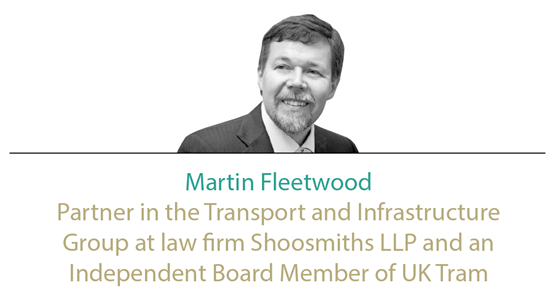
Tom Ingall’s article provides a very good example of how
safety on the railways has continued to improve, particularly in comparison to road safety. But is it fair to compare apples and oranges?
Different interfaces
Since the early days of the railways, one of the main safety features has been the imposition of a physical barrier between people and the moving objects we call trains. There are limited places where there is an interaction between the two, such as stations and level crossings (whether for public roads, farm tracks or footpaths).
In the case of roads, with the exception of motorways and some trunk roads, there are few physical barriers between pedestrians, cyclists and vehicles. And even in the case of the motorways and trunk roads, there is no strict divide between lanes. A few key places where risk has to be managed, compared with myriad places.
As Tom notes, the railway’s strong safety culture comes from analysing the main safety failings and putting in place schemes to reduce those as much as possible. For the railway as a workplace, it is possible to apply a rigorous safety culture - those who do not comply can be removed or do not receive the relevant accreditation.
Staff can be trained to deal with managing passengers at stations, and do a particularly good job at maintaining safety despite ever-increasing numbers of passengers. The main unmanaged areas of crossing the line are also being looked at, with proposals to close level crossings where possible.
Failing standards or errors of judgement?
The imposition of industry standards, and their enforcement for the freight industry and passenger service vehicles, is one way of trying to provide a level playing field between rail and road, and to ensure that those playing by the rules are not subsidising those who don’t.
But of the five people per day who don’t come home, how many are due to a failure by someone to meet relevant standards, and how many are due to an error of judgement? While the former are easier to police, and people consider that doing so is a “good thing”, how do you place controls on what are considered to be reasonable freedoms?
With the road system, is it really possible to do more without impinging on how people go about their lives? I strongly believe that the answer is yes. As the article reports, the improvement in safety in both the oil and rail industries came about through understanding risk rather than simply enforcing compliance with standards. We all undertake a significant number of risk management decisions every day, it’s just that most are subconscious. It would be helpful to bring some closer to the conscious surface.
Dealing with perceived risks
A good example of personal risk management being applied is around the operation of the UK’s tram systems. Most have limited segregation and fencing along part of their length, and none in the busy city centres. Pedestrians are free to wander across the tracks, and cars cross and re-cross the tracks in busy streets.
Until the accident at Sandilands Junction on the Croydon system on November 9 2016, no passenger had been killed on a UK tram system since January 28 1959. While some may consider that light rail has limited coverage, there were 252 million passenger journeys and 21 million vehicle miles operated in the year to March 2016 - therefore many, many opportunities for interactions between trams, passengers, vehicles and members of the public.
So why so few accidents? Arguably people are more aware of the trams, or at least the dangers that they bring. This is partly because they see them being built in their cities, but also because of the signage and actually seeing the tram moving through the streets themselves - big beasts sitting at the top of the road hierarchy.
Those people who saw the tram systems being built remember the new dangers arriving, and pass the information on through family groups. “Watch out for the tram” seems to have more resonance than “Watch out for the car”.
Car drivers appear less likely to accelerate to get across a tram track than to beat the red lights flashing at a level crossing, and members of the public are more likely to step back when they hear the tram approaching. Is that because the slow-moving city centre traffic means there is no perceived benefit from beating the tram across the rails, or does the sound of the tram’s bell raise awareness of the approaching risk? Arguably, yes, but maybe it is also getting into the heads of the pedestrians, cyclists and car drivers.
Don’t dilute the message
If members of the public appreciate the risks posed by trams, can they be persuaded to apply the same thought process to other vehicles and road risks?
A level of education can only go so far, and too many messages (or too wide a message) may be lost. In the past a single message campaign backed up with tough sanctions - such as the wearing of seat belts campaign in the early 1980s - has proved the most successful, and information from the RAIDS scheme could be used to help the industry focus on where most benefits could be obtained. The Department for Transport and the Office of Rail and Road should be looking to take the lead here, but they must also secure the involvement of local authorities, given the latter’s involvement with the provision of the UK’s road system.
So can rail’s safety record be used to help improve safety on the roads? The answer has to be yes, but it needs to be done in a managed and focused way. Also, look at what other parts of the transport sector, such as tram systems, have achieved. Producing a downward trend is arguably better than simply setting a target, as there is a tendency to focus on the target itself and not why the reduction is required.

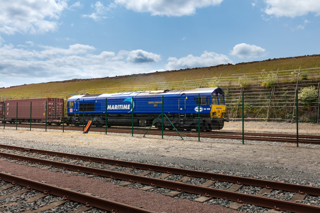
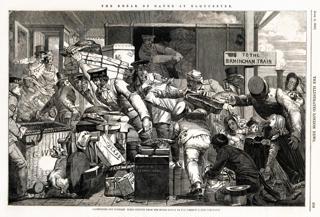
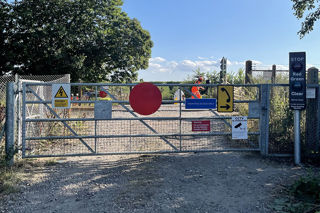
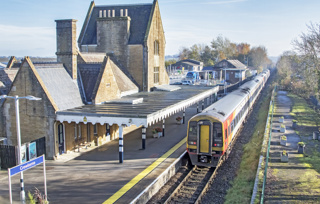
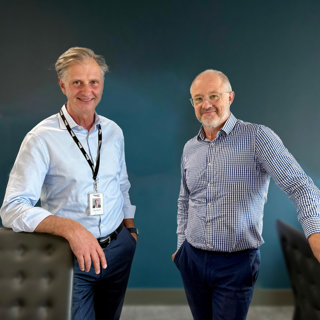

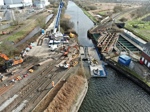









Login to comment
Comments
No comments have been made yet.